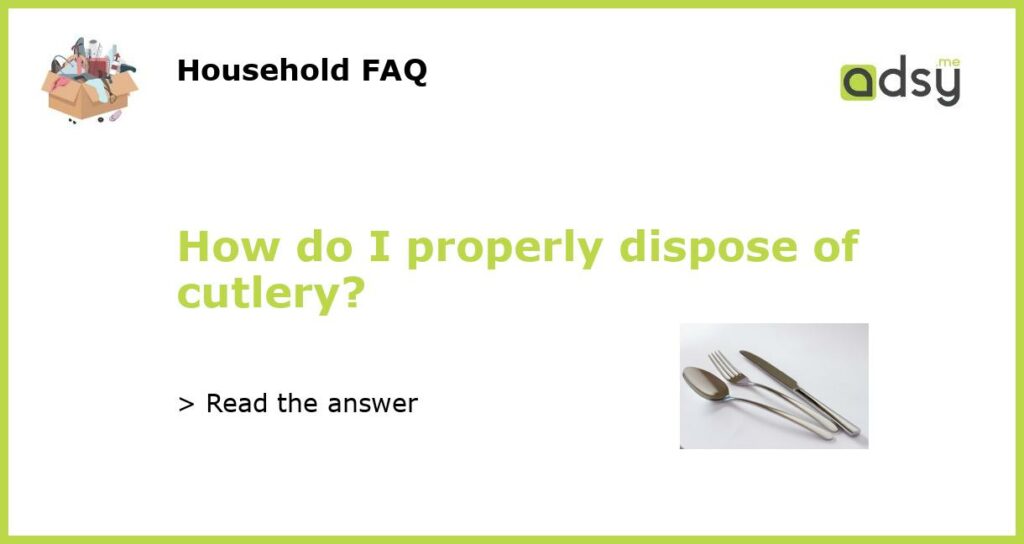Disposable cutlery has become an essential part of our daily lives. It is convenient, cheap, and saves time as we don’t need to wash them after use. However, with the increase in environmental awareness, people are seeking ways to dispose of cutlery safely and responsibly.
Understanding the different types of cutlery materials
Disposable cutlery comes in different materials such as plastic, wood, and bamboo. Understanding the material is crucial in figuring out how to dispose of it properly.
Plastic cutlery is the most common type used and is often not biodegradable. It is essential to check the packaging for a recycling logo, and if it doesn’t exist, it should be thrown in the trash. Wooden cutlery, although biodegradable, may contain chemicals or coatings, and should be separated from organic waste and burned or taken to a composting facility. Similarly, bamboo cutlery is eco-friendly, but may still contain chemicals or require special treatment, so it is essential to read the packaging before disposing of it or check with the manufacturer to ensure safe disposal.
Ways to dispose of cutlery
One common and safe way to dispose of cutlery is to put it in the bin. However, it is essential to note that different materials will require different methods of disposal.
Another option is to recycle cutlery made from plastics. Most plastic cutlery is not biodegradable, so recycling is the more environmentally responsible option. However, it is essential to note that recycling procedures vary according to location, and it’s crucial to check with the local authorities to ensure that the recycling process is safe and functional.
For wooden and bamboo cutlery, they can be disposed of by placing them into the trash. However, it is more eco-friendly to compost wooden and bamboo cutlery. Composting ensures that the utensils eventually decompose and are returned to the earth.
Composting cutlery
Composting cutlery ensures that it decomposes naturally and does not contribute to pollution. This method is ideal for wooden and bamboo cutlery, which is biodegradable.
There are two methods to compost cutlery, namely traditional composting and industrial composting. Traditional composting requires a compost container, organic waste, and water. The mixture needs to be covered and turned regularly, and the cutlery will break down and decompose naturally. Industrial composting, on the other hand, is done on an industrial scale with specific temperature and moisture control to ensure fast decomposition.
Disposing of cutlery may seem trivial, but it’s an essential aspect of keeping our environment clean and safe. Recycling plastic cutlery, separating wooden and bamboo cutlery for composting or burning, and putting cutlery in the trash are all viable options depending on the material. It is essential to be responsible for our daily actions and understand the impact they have on the environment.






